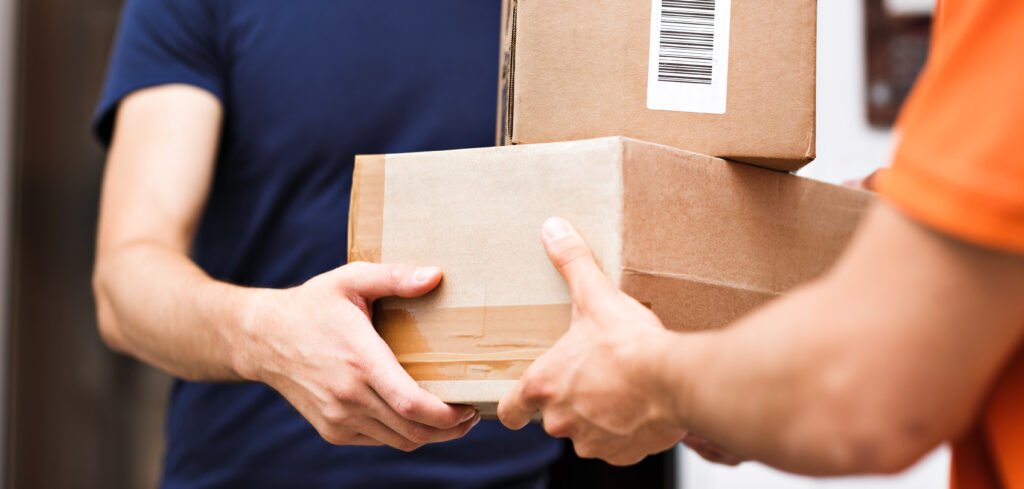Retail e-commerce sales in the UK – the leading market in Europe for online shopping – reached £129bn in 2021 [US$150.7bn], a whopping 73% increase from 2019. In-store retail shopping has historically dominated the total retail sales share in the UK, much as it has globally, but increased consumer comfort with shopping online, driven by the pandemic, has boosted online sales and will continue to do so. By 2025, e-commerce will account for 38.6% of total retail sales in the UK.
Although retailers and carriers in the UK welcome this growth, it is putting tremendous pressure on supply chains and last-mile delivery networks, causing headaches for logistics managers. Parcel volumes in the UK reached 4.1 billion parcels shipped in 2021. Among the challenges faced by retailers, caused by swelling parcel volumes, are increasing consumer demands for better, faster deliveries.
Optimizing delivery orchestration to efficiently handle the growth in e-commerce in the UK and create superior consumer delivery experiences is paramount for retailers. Doing so may require them to reassess their current delivery strategies.
Delivery challenges in the UK
Logistics is complex across the supply chain but the most complex and costliest leg of the supply chain can be found in the last mile, where deliveries are made. There are five key delivery challenges unique to the UK that retailers in the country must look to overcome to gain competitive advantages in the form of enhanced delivery experiences for their consumers.
Increased traffic congestion
The increased parcel volumes and continued adoption of the door-to-door delivery model in the UK have begun to clog streets and the atmosphere, causing delivery delays and triggering sustainability concerns. A recent report from Accenture estimates that the streets of London will carry 1.5 times more delivery vehicles by 2026 than today if the door-to-door model continues. Retailers must look to alternative delivery models that can reduce traffic congestion and miles driven, which includes deliveries made to parcel lockers, pick-up points and even neighbors’ homes.
Incumbent competition
The largest online retailers in the UK are Amazon, Tesco and Argos. Many retailers may find it hard to compete with these incumbents and their established, resource-intensive delivery networks. What they can do is embrace greater control of outsourced carrier networks in the last mile and offer personalized, branded delivery experiences that their larger competitors may not be able to offer. The good news? Smaller retailers may have an advantage at the starting line: 76% of UK shoppers say they prefer to shop at a local store over one of the e-commerce giants.
Carrier integrations
All but the largest retailers rely on outsourced carriers to complete last-mile deliveries. And although many retailers aspire to own their own fleet and enjoy in-house control of the entire delivery process, the reality is that this model is capital intensive and financially not worth its cost. Thus, they are left with outside carriers such as Royal Mail, DPD and DHL to reach their consumers. The challenge here is the lack of visibility, control and flexibility that these carriers provide to retailers, leaving ample room for improvement in the relationship between the two parties.
Rural/urban divide
According to the World Bank, nearly 85% of the population in the UK lives in urban areas, and many of the improvements made in last-mile delivery have centered around urban logistics. Localized fulfillment centers, hyperlocal delivery and the increased use of gig fleets are largely urban solutions. Retailers must not neglect rural areas, however. Identifying the best solution or set of solutions for rural last-mile deliveries is a major challenge for retailers, where billions are spent on retail e-commerce annually.
Increasing consumer demands
Although a challenge experienced among retailers worldwide, meeting and exceeding consumer delivery demands is a proven strategy for driving repeat business and enhancing consumer loyalty. Retailers today can actually compete purely on delivery terms, without needing to alter their products sold or their prices offered. Exceeding delivery expectations happens both before and after the purchase is made. Fast delivery, low/no shipping costs and delivery transparency are key demands among UK shoppers.
UK retailers must reassess their strategies for the future
To create superior consumer delivery experiences that yield competitive advantages, retailers must reassess their current strategies to create successful delivery models for tomorrow. The two most crucial areas of last-mile delivery for which retailers must reimagine strategies are outsourced carrier networks and omnichannel fulfillment. Expect dynamic changes in these areas in the coming years as last-mile delivery technologies become more widely adopted.
To be successful, every consumer-centric retailer must become a logistics company itself. To do this, retailers in the UK must expand and enhance their logistics networks, not through their own delivery fleets but through strengthened relationships with multiple carriers. The current outsourcing model gives retailers very little insight into pricing and delivery expectations, limiting the control they have of their outsourced networks. Retailers can reinvent outsourced delivery orchestration with the right technology platforms that can strengthen the relationship between retailer and carrier, giving retailers greater standardization, customization and information reliability. This all leads to more efficient deliveries, the effects of which can be passed on to consumers in the form of more positive delivery experiences.
Retailers must also look to expand their omnichannel fulfillment options, from the point of origin to the delivery destination. No longer can deliveries be made solely from e-commerce distribution centers and delivered to consumers’ homes. Retailers can add flexibility, capacity and efficiency through localized fulfillment centers, dark stores and in-store fulfillment channels, among others. They can also add more affordable delivery options for consumers by delivering to localized pick-up points and parcel lockers, and continuing to offer in-store pickup if they have brick-and-mortar locations. These omnichannel strategies create wider, more complicated delivery networks but also add faster, cheaper and more sustainable delivery options that consumers will appreciate. Delivery technology platforms make it easy.


